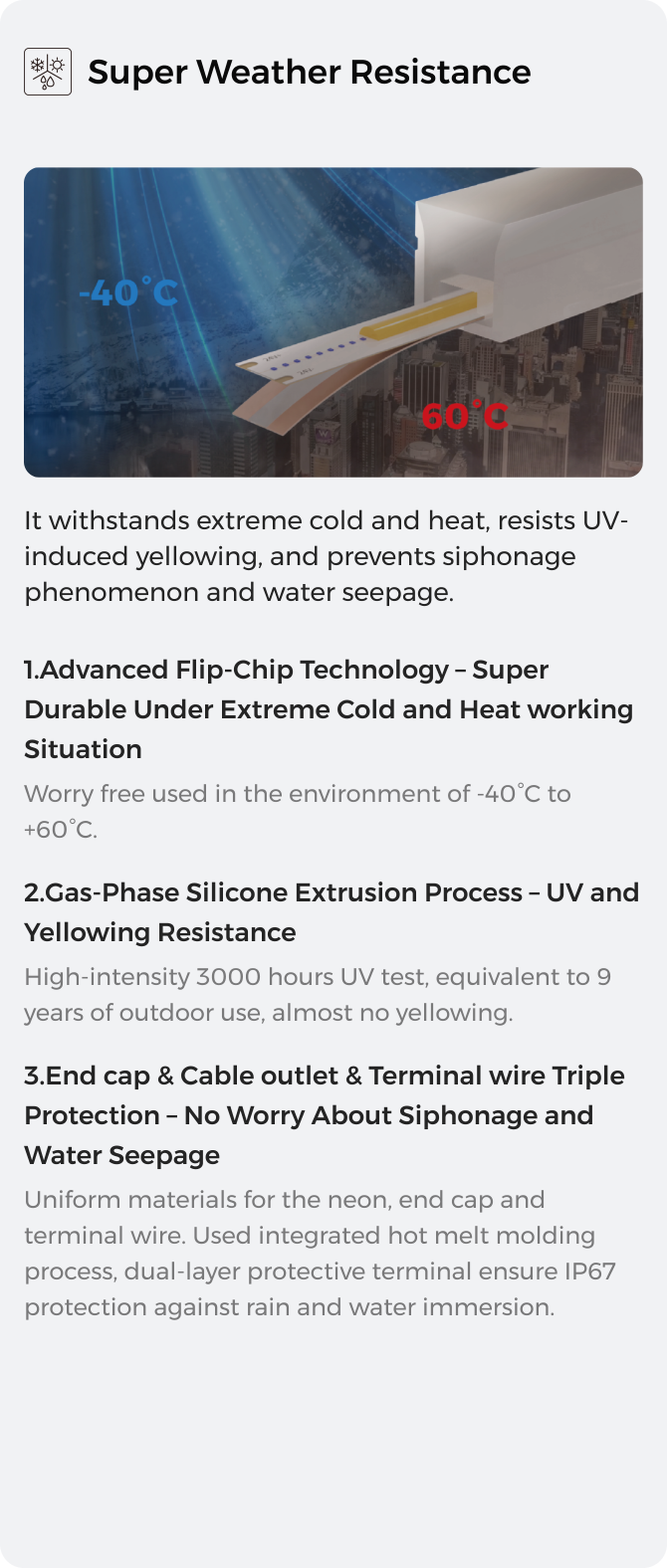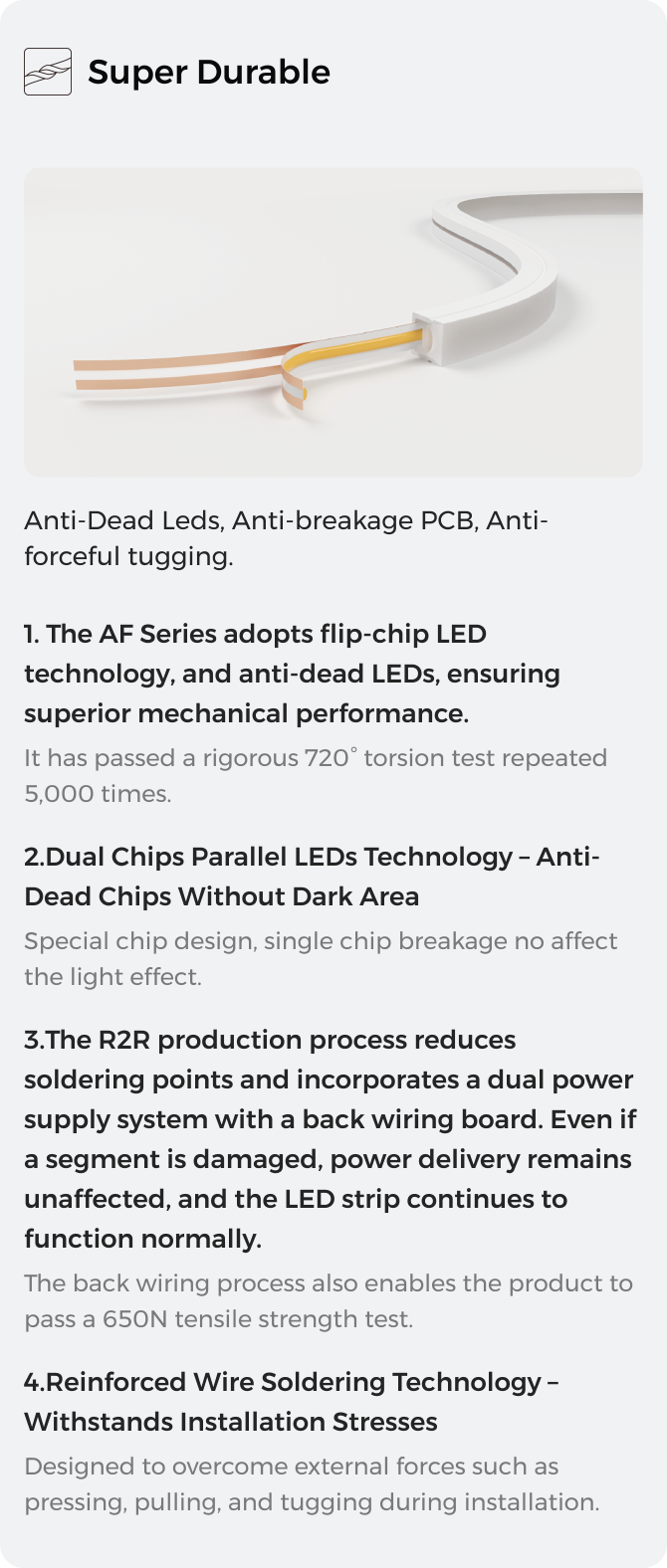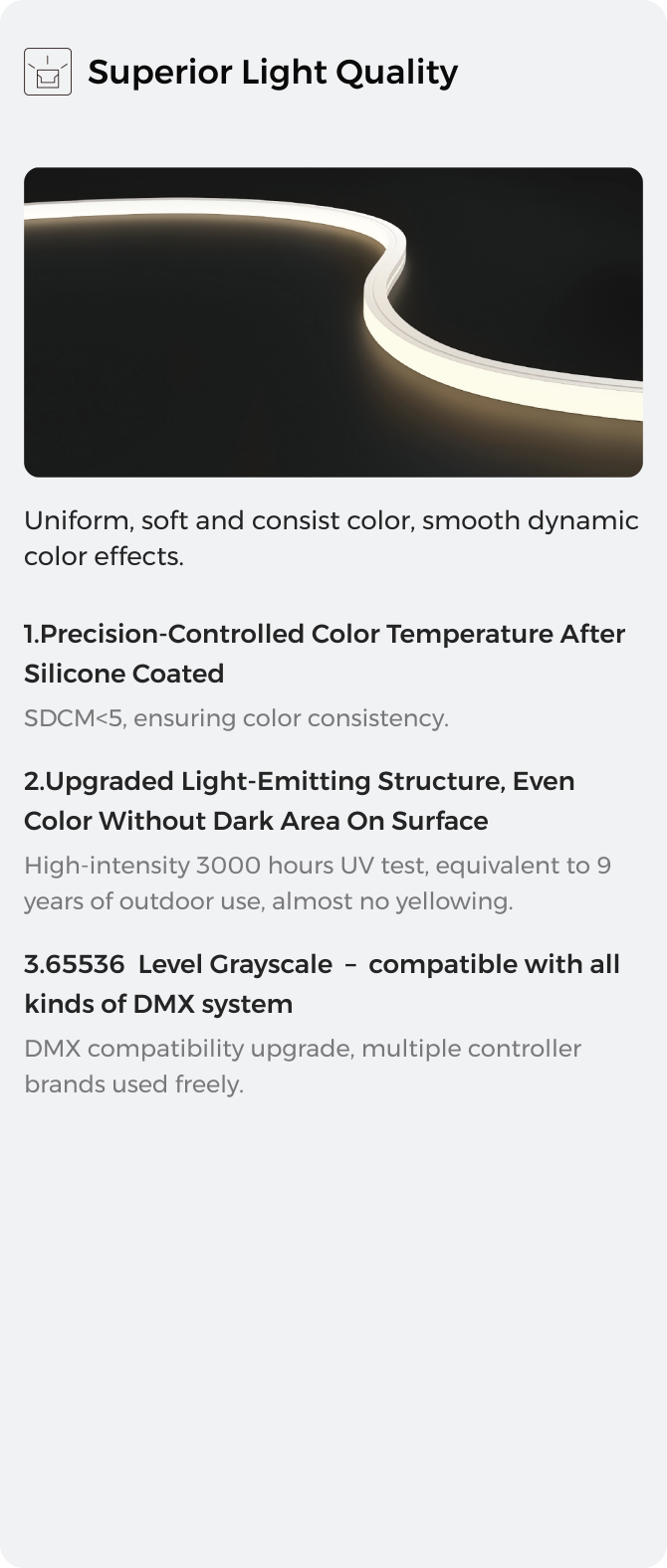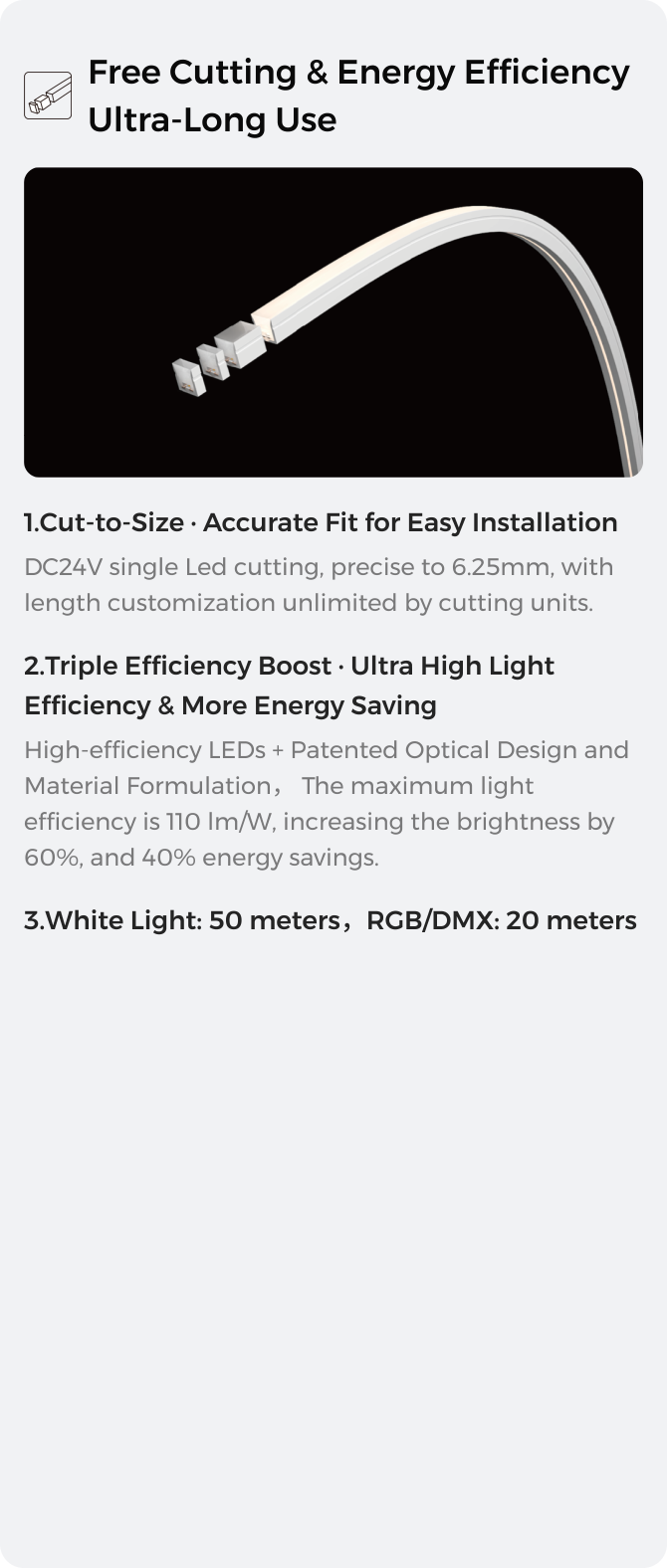
Architectural Facade Lighting
Definition & Values
Definition:
Architectural facade lighting is a technical approach involving systematic lighting design for the external surfaces of buildings using artificial light sources. Its primary objectives are to reshape a building’s nighttime image through artistic expressions of light, highlight its morphological features, material textures, and cultural connotations, while achieving harmonious coexistence with the urban environment.Core Elements:
Integrating technical factors such as luminaire selection, beam control, and installation craftsmanship, methods like spotlighting, backlighting, contour lighting, focal point lighting, and dynamic lighting are employed. Through light-shadow contrast, dynamic changes, and color coordination, these techniques endow buildings with nighttime "personalities," while concurrently fulfilling goals such as safety guidance, environmental harmony, and energy consumption control.Key Values
Segmented Application Scenarios

High-Rise Landmark Buildings
Positioning: As "urban regional landmarks", the design emphasizes enhancing architectural height and massing through lighting, while balancing energy efficiency and light pollution control. Dynamic lighting and intelligent control systems are mainstream trends, enabling diverse visual effects from festival-themed dynamics to daily ambient gradients.
Key Requirements: Prioritizes vertical illuminance and uniformity, balancing overall building brightness with local details to avoid glare affecting the surrounding environment.
Typical Methods: Adopts "Contour Lighting + Flood Lighting", using linear lights along rooftops and edges combined with long-range projection to create a clear urban skyline. Implements intelligent dimming to automatically adjust brightness and dynamic effects by time slots. Requires high-efficiency luminaires with professional light distribution to minimize diffused light pollution and achieve energy conservation.

Public Cultural Buildings
Core Concept: Serving as "carriers of public life", the design restores architectural texture through precise projection while integrating cutting-edge lighting technologies for cultural storytelling. Non-contact projection and dynamic light art are trending, with long-range lighting preserving original structures and inner transmission lighting connecting indoor-outdoor spaces.
Key Requirements: Focuses on flexible multi-mode lighting to balance architectural functions, public safety, and humanistic care.
Typical Methods: Uses "Façade Projection + Under-Eave Flooding + Grazing Lighting" to highlight material textures and architectural temperament. Integrates projection technology for cultural narratives (e.g., historical scroll projections on museum facades). Employs concealed design, hiding luminaires within architectural structures or components to achieve a "no visible fixtures during daytime" effect.

Commercial Block Buildings
Design Objective: Oriented toward "consumer attraction", the design stimulates commercial vitality through dynamic lighting and interactive experiences. Multi-dimensional light environment design (color temperature zoning, brightness gradients) and creating harmonious blends of nature and urban ambiance are emerging trends.
Key Requirements: Enhances vertical illuminance for window displays and guides customer flow via dynamic lighting to improve shopping experiences.
Typical Methods: Creates layered facade environments with varying color temperatures (e.g., warm 3000K for podium zones vs. cool 4000K for towers).
Installs touch-sensitive screens or dynamic light games for interactive engagement. Utilizes natural light sensors and time-sharing control to reduce energy consumption during non-business hours.

Low-Rise Residential Buildings
Core Focus: Centered on "livable living experiences", the design uses soft lighting to create privacy and a sense of belonging. Personalized customization and smart security lighting are mainstream, with linear light strips and motion-sensor lighting commonly used in villa designs.
Key Requirements: Balances functionality and aesthetics, avoiding excessive 亮化 (brightening) that invades privacy, while integrating luminaires with architectural materials.
Typical Methods: Employs multi-layered lighting: indirect light for facades and low-position ambient lighting for courtyards to avoid glare. Matches lighting techniques to architectural styles (e.g., linear light strips for modern villas). Implements intelligent control with motion sensors and natural light adjustment for energy-efficient "auto-on/off" functionality.
Primary Lighting Methods

Contour Lighting
Using linear lights along building edges or object perimeters to outline shapes through light-dark contrast. Functionally enhances nighttime shape recognition with a minimalist visual effect, characterized by "light as line" abstraction. Applicable to roof eaves, bridge railings, sculpture frames, etc., commonly seen in urban landmarks (e.g., skyscraper top contours) and ancient architecture cornice lighting.




Cove Lighting
Hiding light sources in architectural recesses (e.g., ceiling coves or facade slots) to create indirect lighting via reflection/diffusion. Provides soft ambient light, reduces direct glare, and builds subtle spatial layers. Highlights the "light without fixtures" concealment, enhancing softness with diffusive materials. Suitable for indoor/outdoor ceiling edges, structural recesses, handrail interiors, and landscape retaining walls requiring indirect lighting.




Under Eave Lighting
Installing projectors under or inside building eaves to cast upward/outward light on cornice details (e.g., brackets, decorative moldings). Enhances top-layer hierarchy of facades and balances vertical brightness ratios. Features 光影对比 (light-shadow contrast) to emphasize cornice three-dimensionality, ideal for ancient architecture eaves or modern cantilever structures.




Façade Grazing Light-Downwards
Mounting fixtures close to wall tops to project narrow beams downward, revealing concave-convex textures (e.g., brick joints, reliefs) through subtle shadowing. Strengthens tactile perception of rough materials (stone, concrete, handcrafted bricks), suitable for historic building restorations and cultural venue facades.




Façade Grazing Light-Upwards
Positioning fixtures near wall bases to project narrow beams upward, emphasizing texture undulations via inverse light-shadow contrast, especially for bottom details. Creates dramatic effects with bottom-up lighting, ideal for museum exteriors, religious building pedestals, or modern art installations.




Window Frame Lighting
Illuminating all four sides (top/bottom/left/right) of window frames with recessed linear lights or mini projectors to enhance structural rhythm and 3D layers. Transforms windows into facade focal points, improving nighttime readability of details. Features brightness differentiation (front sides highlighted, sides recessed) for depth, suitable for commercial complexes and libraries with high window-wall ratios.




Stylish Lighting
Breaking traditional fixture forms to create artistic light installations (e.g., biomimetic lamps, light sculptures, modular designs), emphasizing creativity and spatial storytelling. "Fixtures as art" integrates aesthetics and functionality, applied to building facades, cultural parks, public art spaces, and luxury hotel lobbies.




Digital Lighting
Using programmable LED fixtures (pixel lights, wall washer matrices, RGB strips) to achieve dynamic effects (color changes, pattern flows, rhythmic flashing) via control software. Enhances interactivity and timeliness, creating immersive experiences. Fits commercial facades, theme parks, and festival venues, often paired with music/video for light shows.




Inner Transmission Lighting
Placing light sources inside objects (e.g., glass curtain wall cavities) to emit light through translucent materials (glass, acrylic, silk), creating a light and airy effect. Minimizes fixture visibility while highlighting material translucency, ideal for "luminous body" imagery in stained glass churches or modern glass box buildings.




Low Position Ambient Light
Using low-mounted fixtures (ground lights, step lights, lawn lamps) to emit soft, glare-free light for near-ground comfort. Enhances pedestrian safety and approachability in slow-paced environments. Applies to walkways, hotel courtyards, and residential gardens, often layered with high-mast lighting for vertical 照度梯度 (illuminance gradients).



Related Products
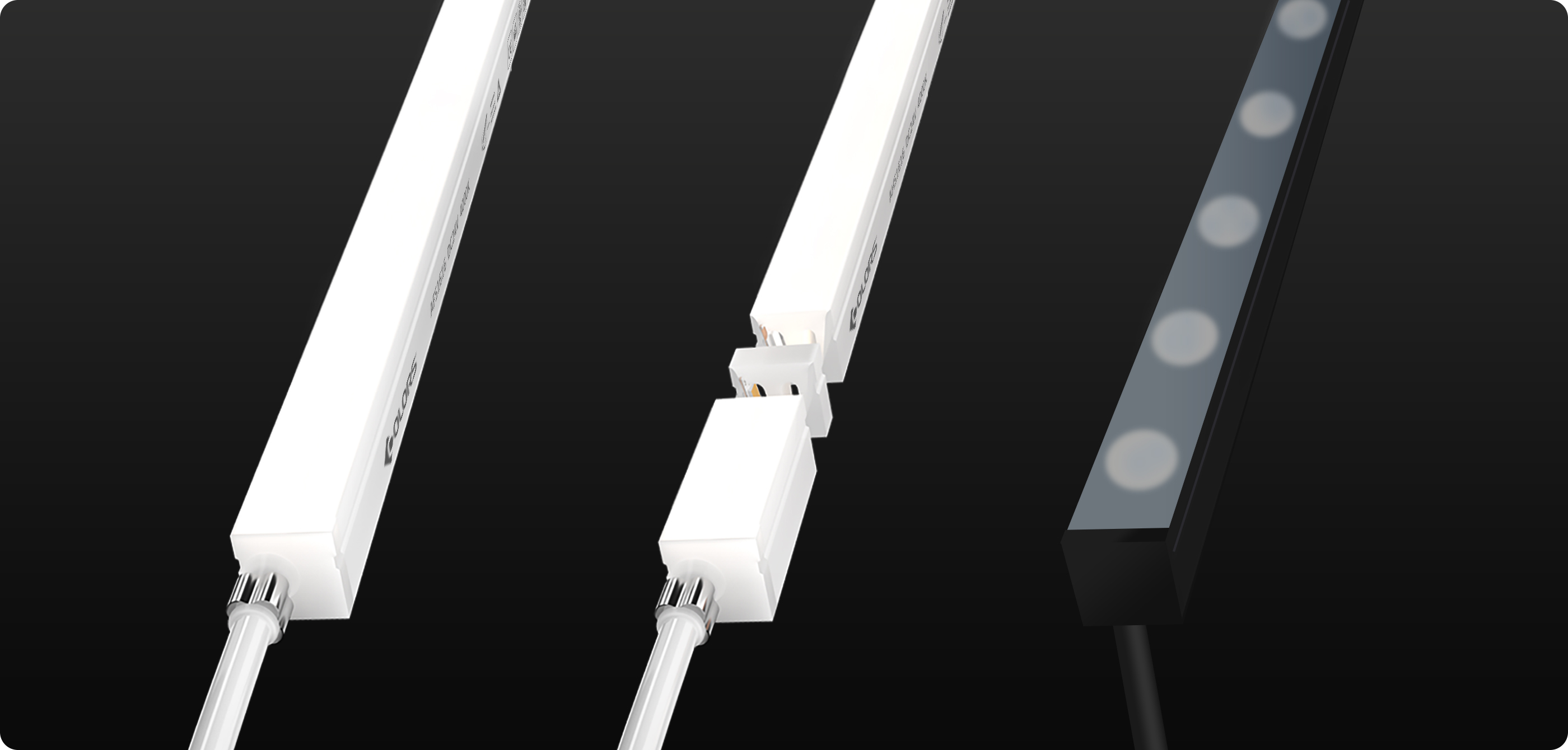
Key Advantages
Supporting Services

Key Clients










Technical Know-How
Architecture Facade Lighting Guide
Catalogue of lighting Solution
Projects Collection
Projects Video
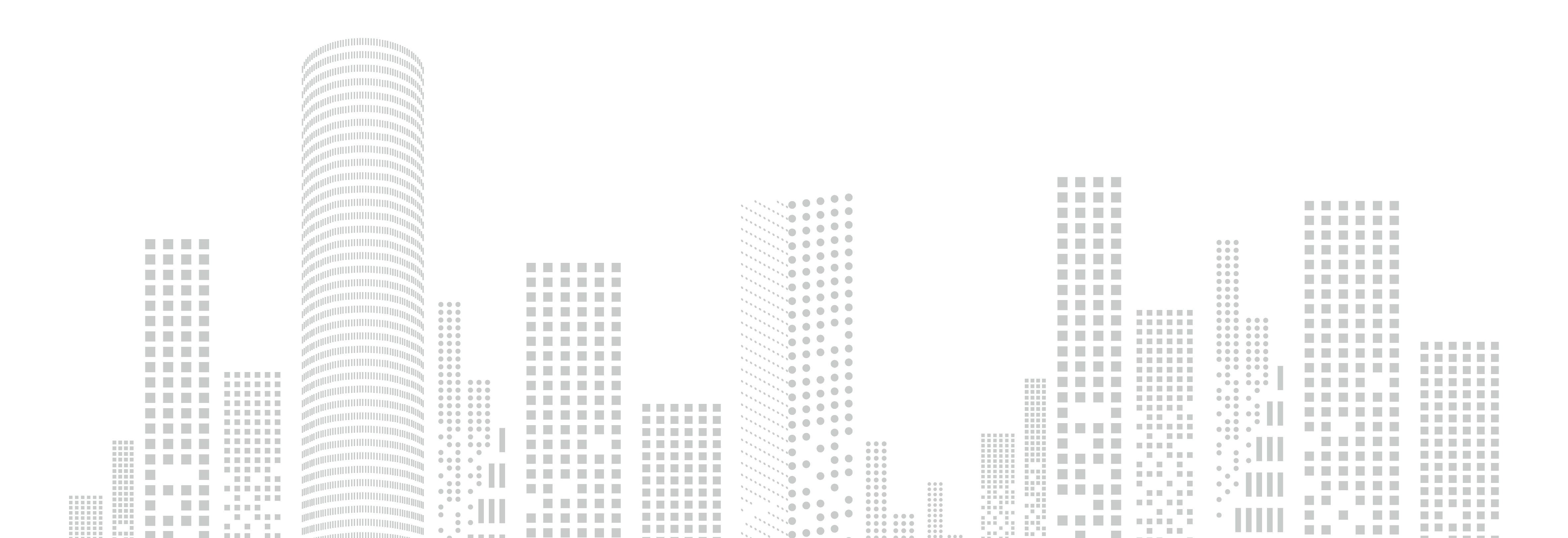
Back To List
Contact Us
We use cookies
Our website uses cookies to improve your browsing experience for the following purposes: to provide a better experience on the website, to measure your interest in our products and services, to personalize marketing interactions, and to deliver ads that are more relevant to you. Before continuing to use our website, you agree to our Privacy & Cookie Policy.








